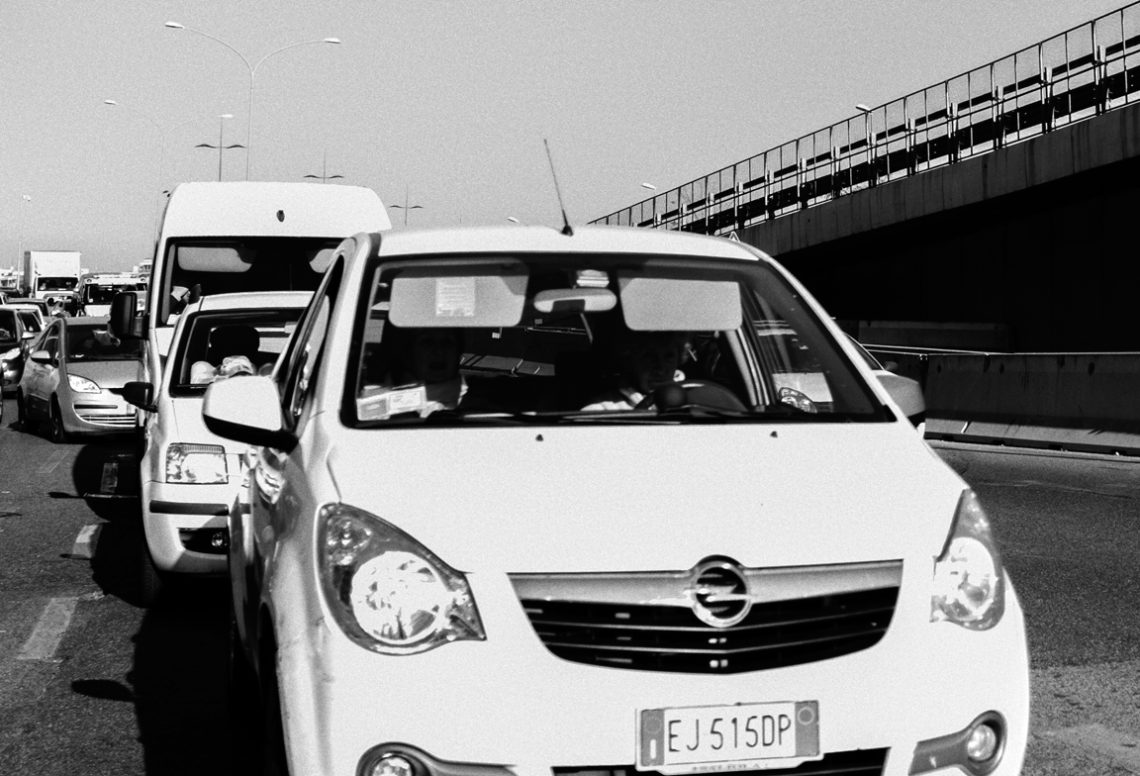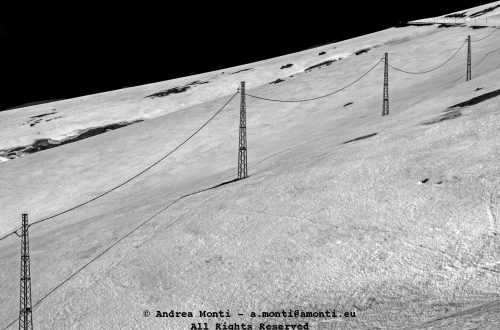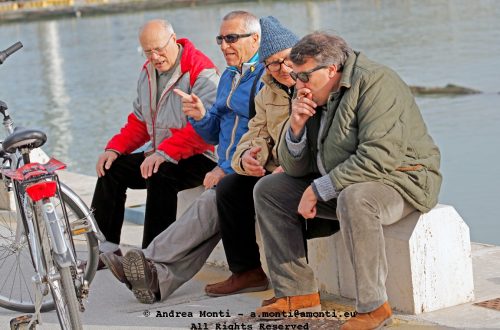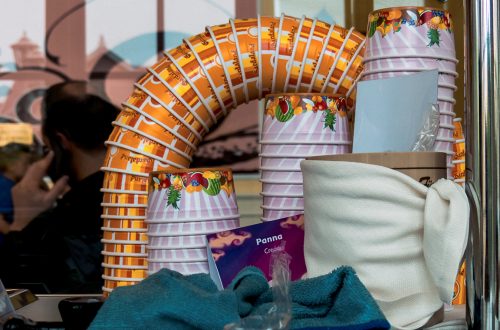
Traffic Jam in Rome
Traffic Jam in Rome turns a mundane urban frustration into a tightly composed study of rhythm, glare, and human impatience. Shot in black and white, the image removes the distraction of colour, allowing form, texture, and contrast to carry the story.
Composition
The frame is dominated by the lead vehicle, a small Opel, positioned slightly off-centre but close enough to the lens to dwarf the rest of the scene. Its mass blocks the viewer’s way forward, much as the driver is blocked in reality. The eye then steps back through a staggered row of vehicles, each one receding into the compressed depth of traffic, until it meets the horizon cluttered with more cars. The vertical intrusion of the flyover on the right slices the frame, providing structural balance against the dense left-hand column of traffic.
This linear arrangement creates a visual bottleneck that mirrors the physical one, making the viewer feel hemmed in.
Exposure and Tonal Control
The high-contrast approach suits the subject, but it’s a double-edged choice. The sunlit bodywork of the lead car is so bright it edges on overexposure, with some highlight loss in the front bumper and number plate. This works narratively—evoking the glare of Mediterranean midday—but sacrifices some surface detail. Shadow detail in the underpass and between vehicles is kept to a minimum, creating a stark divide between light and dark areas.
The tonal compression flattens the background, which helps emphasise the congestion but also removes some potential spatial layering that could have given the frame more depth.
Technical Quality
The focus is crisp on the lead car, with enough depth of field to keep the trailing vehicles sharp enough for recognition without making them distractingly detailed. Grain is present but consistent, suggesting either a high ISO digital capture or a film stock pushed in processing—both choices in keeping with the gritty, documentary feel.
Narrative Strength
What makes this photograph work is not the novelty of its subject—Rome’s traffic is a cliché—but the way it conveys the experience of it. The viewer isn’t simply looking at cars; they’re placed in the driver’s seat, trapped in a metal procession under harsh light. The black-and-white treatment strips away the chaos of colour, focusing instead on the shapes, lines, and expressions (or lack thereof) within the gridlock.
In Traffic Jam in Rome, the city’s endless congestion becomes a visual metaphor: the compression of space, the press of humanity, and the inescapable pause between one point and the next. It’s an image that understands that sometimes the most telling portrait of a place is not in its monuments, but in the slow crawl of its everyday life.




